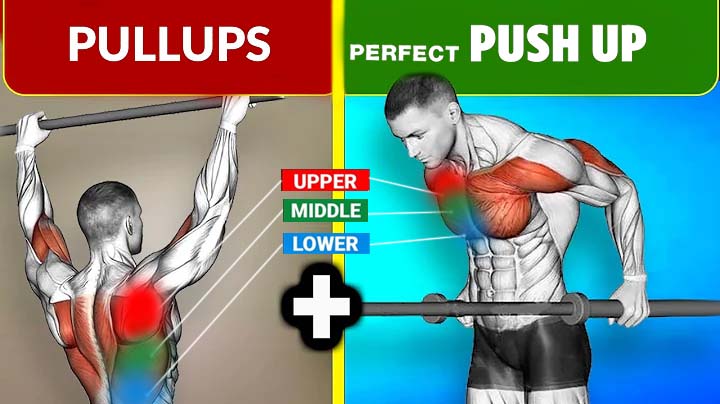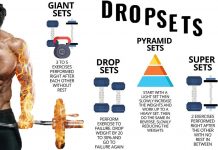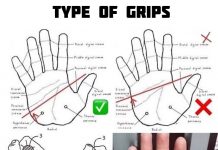How to Combine Pull-ups and Push-ups
- Push up workout
- Pull-up workout
- Abdominal muscle training
Each of them is very effective, but only when used together will they bring perfect results in increasing your strength and developing muscles.
The only thing to say is that it will be hard. By training push-ups and pull-ups at the same time, you will work out more intensively. Your body will have less time to recover. The result of this will be difficult with the execution of individual cycles in each workout. Often it may turn out that you cannot do the whole cycle training and it will need to be repeated the next time.
However, it’s worth the effort. Indeed, progress in the number of push-ups or pull-ups will be slower, but your muscles and strength will grow more evenly and faster than when you do only one workout.
How to Combine Workouts
Our workouts are designed to be combined.
Abdominal muscle training
Abdominal muscles recover very quickly. The load on them during push-ups and pull-ups is low. Therefore, the training of the abdominal muscles can be combined with any workout or even two at once.
Abdominal training is best done after push-ups or pull-ups, not before them.
Push-ups and pull-ups
Push-ups develop primarily the muscles of the chest, and pull-ups develop the shoulders. However, in these two exercises, the muscles of the arms play an important role. In each of these workouts, they work hard. Therefore, you do not need to do both workouts on the same day.
It is best to train alternately. Do push-ups one day and pull-ups the next. A week might look like this:
- Monday – push-ups
- Tuesday – pull-ups
- Wednesday – push-ups
- Thursday – pull-ups
- Friday – push-ups
- Saturday – pull-ups
- Sunday – break
Thus, between each workout of push-ups and pull-ups, you will have a sufficient number of breaks and in each case, after every 2 one-day breaks in each workout, there will be a two-day pause.
Answers to questions:
- Question: What if I can’t complete this cycle and need to repeat it?
- Answer: Of course, if you need to repeat a training day, then the training plan will change, but you will do previous exercises and execute new workouts.
Just repeat this day alternating with another workout until you achieve the result, and then continue in the same way alternately.
The only difference is that a two-day break in both workouts will overlap with another training day, then you just shift the training day and start from the day you left off.
If you stick to the schedule and do not complete all the exercises, and add exercises in the next workout, the training programs will begin to overlap. In such a situation, do not perform for 3 days exercise, and then resume the workout.
It is better to take a break day than to train in parallel or take too short a break. Muscles need to recover and if they don’t, they won’t develop properly.
Don’t overtrain!
If during a workout you feel that you are too tired, that instead of increasing your strength is failing and you are constantly accompanied by muscle pain, then you may have overtrained and your muscles did not have time to recover.
Instead of continuing to train, take a break for 1-2 days until the body recovers. When you feel that the forces have appeared and the pain in the muscles has passed, resume the workout.
This will bring better results than if you force yourself to work with tired muscles. Remember that health and wellness should come first.



















































